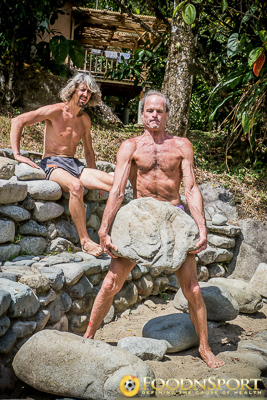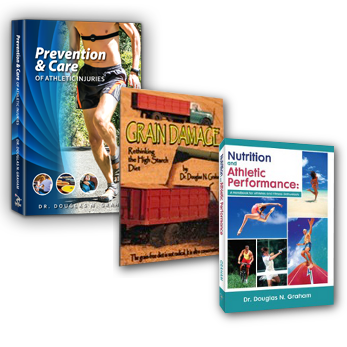
We all know that without strength, we cannot function. All movement requires some element of strength. In most sports, pit two equally talented athletes against each other and the stronger of the two will prevail almost every time. If you wish to improve in your fitness performance, increasing your strength will likely be the critical factor. So why do so many people avoid strength training, and so many more fail or discontinue in their strength training efforts? Let’s look at a few of the myths that tend to demotivate people from pursuing strength training.
Myth #1: Strength training is dangerous
In the same way that guns are not dangerous—it’s how the people use the guns, and that cars are not dangerous—it’s how the people drive the cars, strength training is not dangerous—but can be done dangerously if you so choose. Performed properly, strength training is one of the safest of sports activities. There is no physical contact, no special equipment required, very little movement, and the sport is typically performed in an extremely methodical fashion. People involved in strength training prize recovery, and strongly recommend against over-training.
Myth #2: I gain muscle really easily
No one gains muscle really easily, which is why most if not all of the really big body builders are on PEDs (performance enhancing drugs). Size and strength do not equate. Hence the world’s biggest body builders are not the strongest people in the world, and the strongest people in the world are not the biggest. Big and strong do not equate. The point here is that training for size is different than training for strength. If you think you gain muscle really easily, train for strength, (low reps, high weights) rather than for size (roughly half the weight and five times the reps, more or less).
Myth #3: Strength training takes too much time
Of all the types of training in existence, strength training takes the least time of them all. A reasonable strength training program can easily be completed in less than one hour per week, in two or three short sessions. Time is certainly a factor for all of us, but if you wish to excel at your sport, or you want to reap the benefits of being even moderately fit, strength training needs to be part of your fitness package. Remember, your fitness cannot be better than its weakest link. If you are not training to get stronger, it is highly likely that you are becoming progressively weaker.
Myth #4: I don’t know how
Coaches exist for the very reason that people need coaching, in every sport. Our two most natural activities, however, are running and lifting. Of all of the activities in the world, these two activities are the ones that many people do without the benefit of a coach. Of course, if anyone wishes to get really good at lifting, a coach is a valuable asset. Coaches can save you time, help you improve more rapidly, guide you in terms of technique, and generally be extremely supportive when you are performing the extremely mental sport of strength training.

Flintstone Gym
Myth #5: I’m a runner, not a weight lifter
Runners push off of the ground with every stride, creating an effect known as “ground force.” The greater the ground force, given good running mechanics and no gains in weight, the faster the speed of the runner. The three symptoms of increased ground force are: longer stride length, faster cadence, and reduced ground contact time. If you wish to run faster, jump higher, cycle more rapidly, skate faster, or perform better at any activity related to these, increase your leg strength through focused and specific training activities such as deadlift or squat. No matter what distance you run, you will become a faster runner after just three to six months of consistent strength training.
In the immortal words of champion body builder, Dave Draper, you want “Iron On Your Mind,” and in the words of the original physical culturist, Bernarr McFadden, one of the creators of the current health movement, “Weakness Is A Crime.”
Articles:
- Fitness: Simple Answers to Common Questions by Dr. Graham
- Getting Optimal Results by Dr. Graham
- Raw Vegan Fitness with Dr. Graham by Dr. Graham
- Getting Started: Putting Your Inertia To Work by Dr. Graham
- Deadlifting Instructional Video by Dr. Graham
- Deadlifting Basics: The Proper Stance by Dr. Graham
- More Fitness Articles
Retreats:
Amp Up Your Fitness 
|
Practical Skills To Thrive 
|
Self-Study Materials:
Raw Athlete’s3 Book Combo |
The 80/10/10 Family Membership 
|
80/10/10 Bootcamp How To Live 80/10/10 
|


